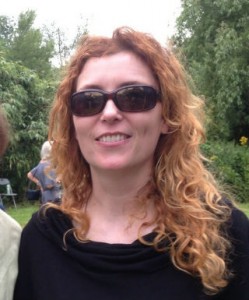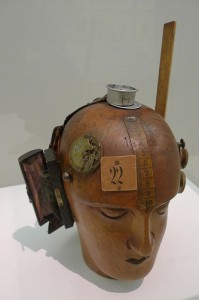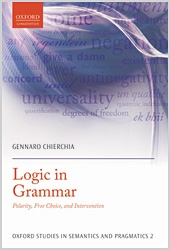Papers by Barbara Abbott, Herman Cappelen, John Collins, Josh Dever, Jane Friedman, Lloyd Humberstone, Robin Jeshion, Justin Khoo, Jeffrey King, Philip Koralus & Salvador Mascarenhas, Adam Lerner & Sarah Jane Lesley, Karen Lewis, Daniel Rothschild, Scott Soames, Una Stojnic, Matthew Stone & Ernie Lepore, Juhani Yli-Vakkuri.
Monthly Archives: January 2014
Smart Cognitive Science
SMART Cognitive Science is an initiative of the Faculty of Humanities of the University of Amsterdam. “We organize lectures, meetings and discussions, offline and online, to highlight the important contributions to cognitive science from traditional humanities disciplines. SMART is an acronym for Speech & language, Music, Art, Reasoning & Thought. Our activitities are organized in close collaboration with the Cognitive Science Center Amsterdam, in which also the Faculties of Science, Medicine, Social Science and Economics & Econometrics participate.”
At the end of the Amsterdam Colloquium, the SMART Cognitive Science initiative organized a debate on the Future of Semantics: Arm Chair Theorizing or Data Fetishism? The panelists were Martin Stokhof, Matthew Stone, Noah Goodman and myself. At least three of us agreed that we need a balance of both. Big data offer priceless new opportunities for linguistic research, but they are no substitute for good theories. The Big Data revolution has forced us to think very carefully about what can and what can’t be learned in a Bayesian way, given realistic assumptions about input and the speed of acquisition. This is an empirical issue that needs to be taken very seriously.
Jonathan Brennan: Computing meanings in the brain
Computational Neurolinguistics Lab
“Our lab studies the mental structures and computations used to understand words and sentences, and how these processes are implemented in the brain. We use tools from formal linguistics, cognitive psychology, computational linguistics and cognitive neuroscience. We have an interest in methods that allow for the study of language under relatively natural circumstances, such as reading or listening to a story.
The apparent effortlessness of understanding speech owes to the finely tuned interactions between a wide range of complex cognitive systems, including those responsible for identifying what words are being said and what they mean, for fitting words into a sentence structure, and for determining the complex meanings and implications expressed by phrases and sentences. We approach the challenge of understanding these systems by combining computationally explicit models of each cognitive operation with data drawn from a wide range of neuroscience tools, including electroencephalography (EEG), magnetoencephalography (MEG) and functional magnetic resonance imaging (fMRI).”
Nina Kuperberg: How the brain builds meanings
Department of Psychology – Tufts University.
“We are interested in when, where and how the human brain builds up the meaning of sentences, discourse (whole stories) and visual images (movie-clips). To address these questions we use multimodal neuroimaging techniques: event-related potentials (ERPs) have excellent temporal resolution and can tell us when neurocognitive processes happen in the brain; functional magnetic resonance imaging (fMRI) has excellent spatial resolution and can tell us where neurocognitive processes occur in the human brain. In addition to studying normal brain function, we are also examining how the build-up of meaning is impaired in patients with schizophrenia and how such impairments are reflected by abnormal patterns of brain activity in such patients.”
My undergraduate introduction to semantics
Undergraduate Introduction to Semantics
Humans build and understand sentences they have never heard before. They talk about mere possibilities. They describe situations that could never exist in reality. How do they do it? What makes them so smart? Humans use symbols, but they do not just use symbols to pick out things in the world. They have symbols that can interact with each other to produce complex descriptions of real or merely possible people, things, events, and situations. The most powerful symbols of human languages are “function symbols”, little words like not, if, and, or, every, and some, or pieces of inflection, like plural or tense morphology. Function symbols are the glue that allows humans to create complex meanings from strings of words that they perceive as arranged into hierarchical tree structures. Function symbols occupy distinguished positions (“head positions”) in those structures, from where they control the process of meaning composition. Function symbols are the kind of symbols scholars of human languages are most interested in. They are the key players in connecting language with creative thought.
In addition to a tight mechanism for meaning composition, humans use particles and intonation to mark given, new, or contrastive information, and to indicate what they are wondering about, what they put up for discussion, and what they take to be established facts. They also use perfectly synchronized gestures to accompany their speech. Most mysteriously, humans seem to systematically exploit each other’s mind reading capabilities to convey much more than what they literally say.
This course introduces you to the craft of doing semantics. Semantics is a thriving subdiscipline of linguistics with close ties to philosophy of language, logic, and cognitive psychology. This class is for you if you are interested in linguistic meaning, have an analytic mind, enjoy theory building, and are curious about how highly abstract theories connect with everyday situations. The class comes with a lab that functions as a scientific initiation component. You will acquire hands-on experience with semantic fieldwork and mini-experiments.
Adrian Brasoveanu: Language, Logic & Cognition Lab
“Capturing the particular ways in which natural language interpretation proceeds is usually taken to involve rich abstract representations and fairly complex operations over such representations. From this perspective, two general goals of formal semantics are to identify patterns of interpretation that seem to involve such abstract (non-overt / latent) representations and operations and to design logical systems in which the ‘right’ range of representations and operators can be defined and in which these representations and operators interact in the ‘right’ way.
At the same time, providing solid empirical foundations for increasingly sophisticated formal semantics theories requires increasingly sophisticated methods of empirical investigation and statistical analysis of the resulting data. In addition, semantic theories should be complemented and further constrained by cognitive theories of how such structured, abstract and compositionally assembled representations and operations can be learned / induced from ‘raw’ observed data and the kinds of mechanisms that underlie their processing in actual natural language usage.”
Lisa Matthewson: Semantic variation
 “I am interested in cross-linguistic variation in the semantics and pragmatics, and what variation (or the lack of it) tells us about Universal Grammar. I have been doing fieldwork on St’át’imcets (Lillooet Salish) since 1992, and on Gitksan (Tsimshianic) since 2010. I have worked on a range of areas in semantics and the syntax/semantics interface, including determiners, quantifiers, adverbs, tense, aspect, modals, evidentials, mood, discourse particles and presuppositions. I am also interested in the methodology of semantic fieldwork, and in native language preservation and oral history. I am involved in community language preservation initiatives, including contributing to the First Voices website for Northern St’át’imcets. Visit our website for storyboards for semantic elicitation! Totem Field Storyboards.”
“I am interested in cross-linguistic variation in the semantics and pragmatics, and what variation (or the lack of it) tells us about Universal Grammar. I have been doing fieldwork on St’át’imcets (Lillooet Salish) since 1992, and on Gitksan (Tsimshianic) since 2010. I have worked on a range of areas in semantics and the syntax/semantics interface, including determiners, quantifiers, adverbs, tense, aspect, modals, evidentials, mood, discourse particles and presuppositions. I am also interested in the methodology of semantic fieldwork, and in native language preservation and oral history. I am involved in community language preservation initiatives, including contributing to the First Voices website for Northern St’át’imcets. Visit our website for storyboards for semantic elicitation! Totem Field Storyboards.”
Inspiration: Meaning Sciences Club at Berkeley
We are a discussion group at Berkeley focused on semantics and related topics in syntax, pragmatics, logic, cognitive science, and the philosophy of language.The group is organized by Peter Jenks (linguistics), John MacFarlane (philosophy), Line Mikkelsen (linguistics) and Seth Yalcin (philosophy).
New Books: Gennaro Chierchia
Gennaro Chierchia: “I spent my intellectual life studying how meaning takes shape in language. A common thread in my work is the idea/claim/speculation that a logic (a way of drawing inferences) spontaneously grows and latches on to the syntactic structures produced by our capacity for recursive computation. This ‘natural logic’ gives a special power to our ability to use language to communicate and refer, a power not found in other species.”
Liina Pylkkanen: Brain mechanisms for meaning composition
“After completing a substantial body of theoretical work addressing the syntax-semantics interface for a particular subdomain of grammar (the verb phrase), I turned my research focus to characterizing the brain mechanisms responsible for the semantic combinatorics of language. The operations by which our brains build complex meanings from simpler pieces are intimately intertwined with computations building complex syntactic structures. Thus an important goal of my laboratory is to also understand the neural bases of syntactic structure building. Finally, since complex syntactic and semantic representations are, in some sense, the end product of language comprehension, being able to study them requires an understanding of the lower-level processes leading up to them. Thus in addition to studies directly targeting sentence-level semantics, my research has also addressed word-level processes such as lexical access and morphological decomposition. To monitor brain activity, the work in my lab primarily employs magnetoencephalography (MEG), which offers the best combination of temporal and spatial resolution among currently available cognitive neuroscience methods.”





